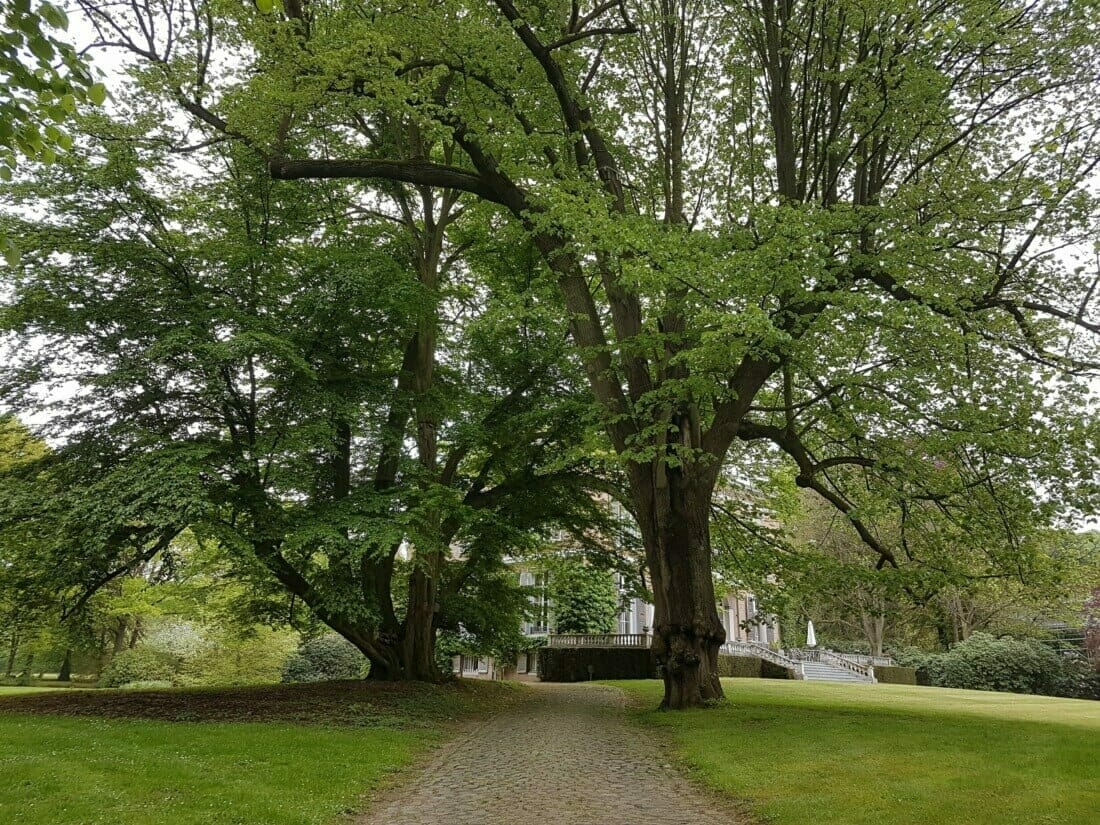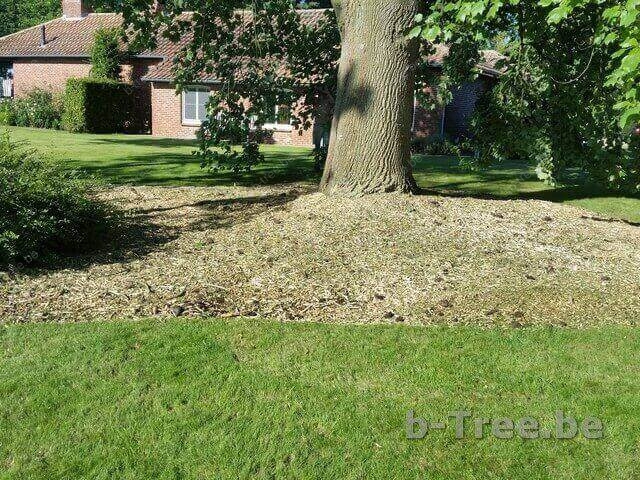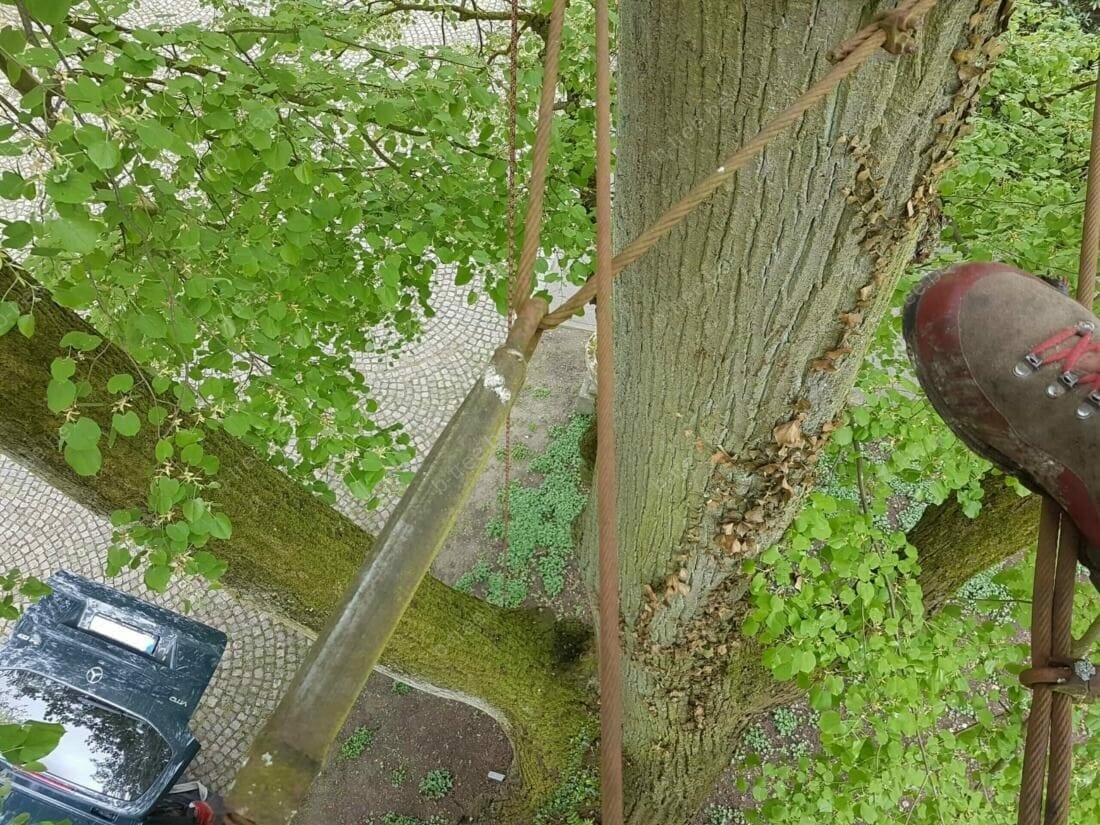
What is tree care and how does it differ from tree surgery?

What is tree care?
Tree care is the set of caring actions and measures for trees.
Throughout their lives and afterward.
It starts from choosing a suitable tree species for a particular location and... planting the trees.
This is followed by guidance and care during its growth. From their youth phase to the adult, veteran and final phase. Always with maximum attention to the well-being of the trees, their condition and vitality and their ecosystem (environment).
Guiding trees during every phase of their life is an important activity in tree care. During each phase of its life, a tree, whether or not in difficulty, has different needs. A thorough analysis, together with the knowledge of the physiology, morphology and the ecosystem of a tree, lead to professional tree care.
Even the end remove without damage of an incurably diseased tree, dead tree or dangerous tree in its final phase is part of the work in tree care.
What is the difference between tree care and tree surgery?
Back in the day, before the 1970s, tree care didn't exist. It is a result of the better insights and knowledge resulting from science regarding the morphological, physiological and mechanical functioning of trees. Just like the better knowledge about their associated ecosystems. Or as Gerrit J. Keizer says, “the tree-specific ecosystem”. The difference is that in tree surgery people did not have these insights and knowledge.
Tree surgery, for example, consisted of mechanically strengthening trees or crown parts. By pouring concrete into cavities or installing masonry with iron bars in it. Also sawing away rotten parts or milling out holes parasitic fungi affected parts. Steel cables were also sometimes used in tree surgery. To tear out heavily overloaded crown parts or plaque shells in these trees.
Applying wound dressing is also an old practice from tree surgery.
Some examples of these ancient practices
Many of these practices in tree surgery are completely outdated.
To give an example, milling or sawing away rotten parts of a tree is very bad. Because this breaks the barrier zone that has been formed in the wood to protect the healthy wood from the parasitic fungal infection. This allows the fungus to attack healthy wood much more quickly and accelerates the damage to the tree.

Here you see the hollow at the bottom of the base of an old beech tree. This was created by sawing away a rotten piece of wood with a chainsaw thirty years ago. Now the base of the stem is completely damaged (see the fruiting bodies in the cavity of the flattened fungus). To relieve the tree mechanically it was necessary to beech pruning.
A second example of these old practices from tree surgery
Another example is the application of steel cables in trees as crown anchorage. These form static crown anchors, causing the crown parts to move less. Then there is less growth in thickness, but there is still growth in length in the following years. The result is that these crown parts then become more susceptible to breakage.

Steel cables hold the crown of this monumental lime tree together. It is a static crown anchorage that was used in tree surgery.
A third example from tree surgery; use of wound dressing
Applying wound dressing accelerates rotting behind the place where it is applied. It remains moist behind the wound dressing (the pruning wound cannot dry out). This is what it takes to grow a fungus and keep it alive. The cracks in the wound dressing also allow air and therefore oxygen to reach the fungus. Now the parasitic fungus anything to do his job. The tree will begin to rot inward.
There are dozens more examples to give.
Knowledge in tree care is increasing every day and this will continue. That is why b-Tree Tree Care follows many courses and professional magazines. Every year, every week, day after day.
Pruning trees as an example of tree care.
During the growth of a tree, accompanying pruning is important. To achieve the desired size and shape and to prevent problem branches at an early stage.
With accompanying pruning, smaller branches and shoots are pruned. This is completely different with maintenance pruning or overdue pruning.
Carrying out accompaniment pruning, from an early stage in the youth phase, reduces the risk of conditions such as parasitic fungal infections, reduced in size when pruning branches at a later stage of the tree's life.
With accompanying pruning, only smaller branches (smaller in diameter) are pruned. This makes the pruning wounds smaller and therefore reduces the risk of diseases and infections. This in turn improves the well-being and life chances of the tree in the long term.
With subsequent maintenance pruning or overdue pruning, which occurs if accompaniment pruning was not carried out, larger pruning wounds must be made. Because of these larger pruning wounds, the risk of infections is also greater.
contact us now for the timely pruning of your trees.
A declining tree, what can the arborist do for your tree?
If there are periods when a tree is struggling, for example:
- exposure to a severe winter with prolonged and heavy frost,
- or from exposures to a hot and dry spring or hot summer,
- or due to an infection,
In tree care, we take timely measures to get the tree back in good condition condition to get. And thus prevent worse (death in the worst case). Here the knowledge of the arborist is important to achieve the desired result. A correct and properly executed one location improvement often offers the solution.
Trees that have deteriorated significantly over the years due to limited root space, disease or parasitic fungal infestation, can be sensitive to wind throw, trunk breakage or branch breakage. These trees then pose a risk to people and the environment.
Correctly assessing the poor condition of the tree and its reversibility is the professional job of the arborist
Being able to skillfully assess whether a location improvement still has its use, or is no longer an issue, for example because the tree has been affected by an aggressive weak parasite, is also our task in b‑Tree tree care.
Invest in one in time location improvement or installing ventilation ducts or feeding tubes if necessary for the tree. Don't wait until it's too late. If the condition of the tree has deteriorated so much that the decline process is irreversible, it is too late and you must cut down a tree. You don't want to wait too long to contact a doctor if you are sick.
b‑Tree tree care is the best for you advice and offer the best solutions.
contact us without obligation.
Why use rope technique in tree surgery? What are the pros and cons?
When pruning and care for trees, we mainly access them by using rope access techniques.
Why use rope techniques?
This is interesting when trees are in a very difficult and inaccessible location, e.g. in a park, a forest or in a completely enclosed area. Even when there are branches above adjacent buildings, roofs or verandas, it is often impossible to carry out the work in a cost-friendly and tree-friendly manner using traditional methods. The use of rope techniques has the great advantage that no heavy rolling equipment such as an aerial work platform or crane needs to be used.
And why we often don't use an aerial work platform
In many cases, an aerial work platform or crane causes damage. To the root system of the tree and to the environment. Such as driveways, underground pipes, beds and lawn. When using heavy rolling stock, a great deal of pressure is exerted on the ground. This also affects the root system of the tree. As a result, compaction of the soil occurs. Which in turn causes a lack of oxygen in the soil. With root death and so on loss of condition of the tree.
Soil compaction makes it much more difficult for trees and plants to exchange soil gases with the environment. Which leads to loss of condition and heavy damage. Even often to the complete death of the tree. This process can spread over several years. Usually the mistakes of 10 to 20 years ago lead to today's problems and consequences.
Second major advantage of rope techniques
A second very big advantage of the rope techniques for entering the te pruning and caring for trees is that the bark of the trees is not damaged. Opposite entrance with climbing tracks.
Treading on trees with climbing tracks causes small but very large crater-shaped damage in the bark of the tree. These crater-shaped damages provide an ideal gateway for unwanted ones parasitic fungal infections or fungi. And other infections such as bacteria or viruses. Fungal infections can cause the trunk to rot internally. Which could mean a total loss of the tree in the long term.
We have a solution for the most difficult to reach places. Feel free to give us a new challenge. We love it!
contact us now for an appointment.